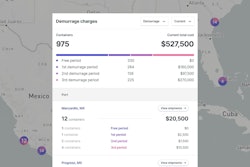
Supply chain resilience is a critical aspect of business operations that is often overlooked. In today's globalized and interconnected world, businesses are heavily reliant on their supply chains to deliver goods and services to customers. However, supply chains are vulnerable to various disruptions, such as natural disasters, political instability, and economic downturns. Businesses must prioritize supply chain resilience to ensure their operations can withstand and recover from these disruptions.
Proactive measures to develop a resilient strategy involves identifying potential disruptions, building strong relationships with suppliers and partners, creating a flexible infrastructure, implementing effective risk management practices, investing in technology, ensuring transparency and visibility, training and developing a resilient workforce, and continuously monitoring and improving.
Developing a resilient supply chain strategy
Developing a resilient supply chain strategy involves several steps. Businesses must first assess their current supply chain vulnerabilities and identify areas that need improvement. This can be done through conducting risk assessments and mapping out the entire supply chain to identify critical nodes and dependencies. Potential disruptions also need to be identified and can come in various forms such as earthquakes, hurricanes, or floods, political instability or conflicts, economic downturns, supplier bankruptcies, labor strikes, and cyberattacks.
Once vulnerabilities are identified, businesses can then develop strategies to mitigate these risks with actions including diversifying the supplier base to reduce reliance on a single source, implementing redundant systems or processes to ensure backup options are available in case of disruptions, and establishing alternative transportation routes.
Building strong relationships with suppliers and partners is also important to foster trust, collaboration, and open communication, which are essential for effective risk management and problem-solving during disruptions. Establish regular communications to discuss performance, share information, and address any concerns or issues, including setting clear expectations and performance metrics to ensure alignment and accountability. Collaborate with suppliers and partners on risk management initiatives to jointly identify potential risks, develop contingency plans, and share resources or expertise to mitigate the impact of disruptions. This can also extend to sharing information on demand forecasts, production plans, and inventory levels to improve visibility and coordination across the supply chain. A flexible supply chain infrastructure is also essential as it allows a supply chain to adapt and respond quickly to changes in demand, supply, or external conditions. This can be achieved by having redundant capacity or resources, modular processes or systems that can be easily reconfigured, and agile decision-making processes.
Implementing effective risk management practices is another critical element to creating a resilient supply chain. Businesses need to identify potential risks, assess their likelihood and impact, and implement strategies to mitigate or manage these risks. Risk assessments should be conducted through various methods such as scenario planning, historical data analysis, or expert opinions.
Technology, transparency and workforce
Technology plays a crucial role in enhancing supply chain resilience with various technologies businesses can invest in to improve visibility, coordination, and responsiveness across the supply chain. One example is the use of advanced analytics and predictive modeling tools as these tools can help businesses analyze large amounts of data to identify patterns, trends, and potential risks. Another example is the use of real-time tracking and monitoring systems. These systems allow businesses to track the movement of goods and monitor their condition throughout the supply chain. This improves visibility and enables businesses to quickly identify any disruptions or delays and take appropriate actions.
Supply chain transparency and visibility are also crucial for resilience as they enable businesses to make informed decisions, identify potential disruptions early, and coordinate effectively with suppliers and partners. To ensure transparency and visibility, businesses can implement technologies such as real-time tracking systems, data analytics tools, and collaborative platforms that enable information sharing across the supply chain. It is also important to establish clear communication channels and performance metrics with suppliers and partners to ensure transparency and accountability.
Having a resilient workforce is also essential to ensure team members are equipped with the necessary skills, knowledge, and mindset to respond effectively to disruptions and contribute to the resilience of the supply chain. It is also important to foster a culture of resilience is also key within the organization which could involve promoting open communication, encouraging innovation and continuous learning, and recognizing and rewarding employees who demonstrate resilience in their work.
Continuously monitoring and improving supply chain resilience
Supply chain resilience is not a one-time effort but an ongoing process. It is important for businesses to continuously monitor and improve their resilience to adapt to changing conditions and emerging risks. One strategy to monitor resilience is through regular performance measurement and benchmarking. This involves establishing key performance indicators (KPIs) that measure the effectiveness of the supply chain in terms of its ability to respond to disruptions, recover quickly, and maintain business continuity. These KPIs can be compared against industry benchmarks or best practices to identify areas for improvement. Another strategy is to conduct regular audits or assessments of the supply chain's resilience capabilities. This can involve reviewing processes, systems, and resources to identify gaps or areas that need improvement. The findings from these audits can then be used to develop action plans or initiatives to enhance resilience.
By prioritizing supply chain resilience, businesses can mitigate the impact of disruptions, ensure business continuity, and maintain customer satisfaction. Therefore, businesses should make it a priority to invest time, resources, and effort into building a resilient supply chain that can withstand and recover from disruptions.


















